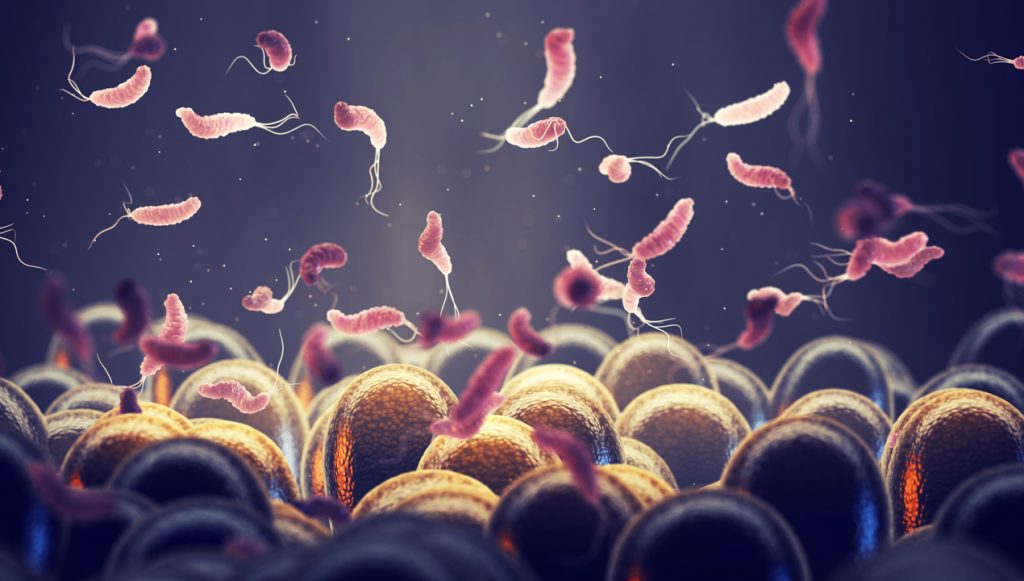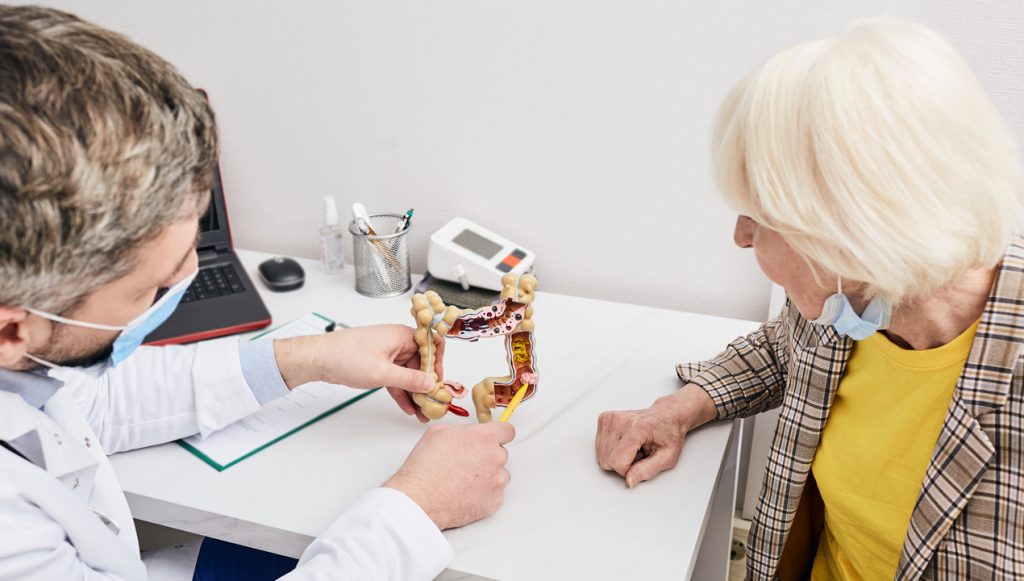Scientists have uncovered the inner workings of a critical protein involved in a variety of cellular functions, potentially paving the path for more effective and less hazardous cancer medicines. The researchers used Nobel Prize-winning imaging methods to show how the tankyrase protein turns on and off by self-assembling into 3D chain-like structures.
About the Cancer: –
A kind of colon or rectum cancer that occurs at the lower end of the digestive tract. Early instances may begin as benign polyps. These frequently have no symptoms but can be found by screening. As a result, physicians advise testing for people who are at high risk or above the age of 50.

Symptoms: –
Colorectal cancer symptoms vary based on the size and location of the cancer. Typical symptoms include changes in bowel habits, changes in stool consistency, blood in the stool, and stomach discomfort. The size, location, and degree of the disease’s spread dictate colorectal cancer therapy. Common treatments include surgery to remove the cancer, chemotherapy, and radiation therapy.
Age of people affected by it: –
Colon cancer most typically affects elderly people, although it may afflict anyone at any age. Polyps are the most common beginning point. Polyps are microscopic, noncancerous (benign) clusters of cells that form on the inside of the colon. Over time, some of the polyps may grow into colon cancer. Polyps can be so small that they create little, if any, symptoms. As a result, doctors recommend regular screening tests to help prevent colon cancer by finding and removing polyps before they become cancerous. Surgery, radiation therapy, and pharmacological treatments such as chemotherapy, targeted therapy, and immunotherapy are all available to assist control colon cancer.

Who is in risk?
Although the specific origin of bowel cancer is unknown, there are a number of factors that might raise the risk. These consist of
- A diet heavy in red or processed meats and poor in fibre can increase the risk. Bowel cancer is more frequent in those who are overweight or obese. Inactivity increases the chance of developing bowel cancer.
- A diet heavy in red or processed meats and poor in fibre can raise your risk. Bowel cancer is more frequent in those who are overweight or obese. Inactivity increases the chance of developing bowel cancer.
- Nearly 9 out of 10 instances of bowel cancer occur in adults 60 years of age or older.
- High alcohol use and smoking may raise the risk of developing bowel cancer.
- Family history of having a parent, sibling, or other close relative who got colon cancer before age 50 increases their lifetime are at greater risk.
Some people are more likely to develop bowel cancer if they have another disorder that affects their intestine, such as severe ulcerative colitis or Crohn’s disease, for an extended length of time.
The research: –
Scientists have uncovered the inner workings of a critical protein involved in a variety of cellular functions, potentially paving the path for more effective and less hazardous cancer medicines. The researchers used Nobel Prize-winning imaging methods to show how the tankyrase protein turns on and off by self-assembling into 3D chain-like structures. Their findings, published in the journal Nature, provide critical structural insights into the mysterious but vital tankyrase protein, which plays a key role in the progression of bowel cancer. Scientists at The Institute of Cancer Research in London hope their findings may pave the way for new sorts of cancer treatment that can control tankyrase more accurately and with fewer side effects than is presently achievable. The basic finding might have ramifications for treating cancer, diabetes, inflammatory, cardiac, and neurodegenerative illnesses, among others. Cancer Research UK, Welcome, and The Organization of Cancer Research (ICR), which is both a charity and a research institute, provided most of the funding for the study.
Tankyrase is a protein that promotes ‘Wnt signalling,’ which is necessary for the body to retain stem cells and carry out activities such as cell division and development but, when uncontrolled, can fuel bowel cancer and other diseases. Tankyrase also regulates other cell activities important in cancer, such as the preservation of chromosomal ends, known as telomeres. Tankyrase, unlike the PARP1 enzyme from the same ‘PARP family,’ is still poorly understood. While medications that target PARP1 have already reached the clinic, scientists still don’t completely understand how tankyrase is activated, how it works, or how to stop it without causing undesired side effects.
For the first time, scientists draw parallels between the activation mechanisms of PARP1 and tankyrase in this work. They propose that, like PARP1, tankyrase acts by recruiting itself to a particular site and ‘self-assembling,’ clustering, and modifying its 3D structure to activate and fulfil its function. Scientists created medications to inhibit tankyrase in an attempt to cure bowel cancer in the previous decade, but because Wnt signalling is involved in so many processes, the treatments caused too many adverse effects for them to reach clinical trials.
Scientists at the ICR set out to find new structural information using cutting-edge cryo-electron microscopy to truly grasp how tankyrase inhibitor’s function and how to build less harmful therapies. This incredibly strong technique of microscopy freezes materials at -180°C in order to examine minute features of protein structure. They were able to visualise and record how tankyrase ‘self-assembles’ into fibres (chain-like structures) and why fibre creation is required for tankyrase to activate itself using this method. The ‘domains’ – distinct portions of the protein associated with diverse activities – that allow tankyrase to assemble and disassemble into different configurations, according to researchers, are promising targets for future cancer therapies. They also believe that, depending on which structural domains medicines bind to, not all tankyrase inhibitors will have the same effect on Wnt signalling.
The goal is that researchers will be able to create structurally distinct tankyrase inhibitors, which will be safer and more successful in treating bowel cancer and other disorders associated to tankyrase. The study was directed by Professor Sebastian Guettler, Deputy Head of the Division of Structural Biology at The Institute of Cancer Research in London: The findings shed light on tankyrase, a protein molecule that plays an important role in bowel cancer and other diseases but has hitherto eluded researchers. The study demonstrated how tankyrase is activated and transformed from a ‘lazy’ enzyme to an active one.” If we can develop less dangerous medications to manage this process, they may be able to develop a successful bowel cancer treatment in the future.
Reference: –
- https://www.nature.com/articles/s41586-022-05449-8
- https://www.mayoclinic.org/diseases-conditions/colon-cancer/symptoms-causes/syc-20353669
- https://www.nhs.uk/conditions/bowel-cancer/
- https://www.nhsinform.scot/illnesses-and-conditions/cancer/cancer-types-in-adults/bowel-cancer

MDForLives is a vibrant community of healthcare professionals and patients dedicated to shaping the future of healthcare. We provide valuable global insights to healthcare companies through online surveys, interviews, and discussion forums.







